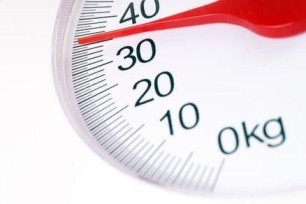General Insurance Blogs, Articles & Updates by - Magma HDI
Have us call you
- RENEW YOUR POLICY
- BUY NEW POLICY

Ten best tips to reduce high cholesterol levels
Increased cholesterol levels are a cause of concern as it brings multiple health issues, including the risk of a stroke and other heart diseases. Irrespective of age, maintaining cholesterol levels is the first step towards living a healthy lifestyle.
Supposing you are looking for ways to lower your cholesterol without medication, read this post to learn how to keep those numbers down naturally.
1. Add monounsaturated fats to your diet:
Monounsaturated fats can be found in food substances like olive oil, canola oil, tree nuts such as almonds, pecans, and cashews. These fats do a great job decreasing LDL (bad cholesterol) and increasing HDL (good cholesterol). They even work to stop the oxidation of the cholesterol that contributes to clogging the arteries.
2. Add polyunsaturated fatty acids:
Consider including polyunsaturated fatty acids as they have shown tremendous results in decreasing LDL cholesterol and reducing the risk of heart disease and type 2 diabetes. These are principally your omega-3 fatty acids. You see these in oily fish like salmon, mackerel, and shellfish like shrimps. You may also find them in tree nuts and flax seeds.
3. Avoid trans fats:
This is the next thing you should eliminate from your diet. You will find these in pastries, butter spreads, cookies, etc. The major con with trans fats is increasing your total cholesterol, including your LDL, and decreasing your HDL by 20%.
4. Add more soluble fibre:
Soluble fibre is derived from plants, and it works on the bacteria present in your guts. The digestion of the fibre by the bacteria helps lower your cholesterol. Beans, lentils, fruits, and whole-grain oats are a few fibre rich foods.
5. Workout:
Working out not only decreases your harmful LDL but also increases your good HDL. More extensive studies have shown that 30-45 minutes of activity five days a week can enhance your cholesterol and decrease the risk of heart disease.
6. Stop smoking:
In smokers, the immune cells cannot return cholesterol from the vessel walls to the blood where it should be and contribute to plaque formation that leads to clogged arteries. So, do your body a favour and quit smoking.
7. Focus on shedding some weight:
Plenty of studies have shown that you can positively impact your cholesterol by losing weight. Pick a good eating plan, stick to it, and be healthier to shed some pounds.
8. Add more vegetables and lean meat to your diet:
The closer you get to your vegetables, the easier it becomes to reduce cholesterol levels. Non-vegetarians can choose leaner meats like fish and skinless chicken to cut off the extra fats.
9. Plants, sterols, and stanols:
These are plant-based versions of cholesterols, but they do not elevate your body’s cholesterol level. Instead, these versions compete with its destructive forms, avert absorption, and reduce LDL.
10. Supplements:
The last thing you can do is look at different supplements required to control cholesterol. There are several supplements out there, but most work on improving the amount of Omega-3 fatty acids in our diet. Things like fish oil and flaxseed oil help improve your HDL.
Cholesterol diseases are linked directly to the heart, and the treatment for most of them is taxing for your pockets. Aged parents and people with irregular eating and sleeping habits commonly face this issue. Follow these healthy tips and check out some of the best health insurance in India for parents to add an extra layer of protection.
Click HERE to get the best health insurance in India for parents.
Disclaimer: The information provided above is for illustrative purposes only. To get more details, please refer to policy wordings and prospectus before purchasing a policy.

Caught in traffic? Here are five innovative ways to keep your mood high
Getting stuck in traffic has become a usual thing in rush hours, and it is the most unpleasant scenario of every city these days. These long queues of snail pacing moving vehicles can be frustrating and sickening. However, the time taken in your commute does not have to go to waste. You can do some productive things than just hanging in your car or cursing drivers who try to cut the queue.
If you desire to overcome the problem by finding solutions, it won’t be a problem anymore. There are numerous methods to help you with your morning and evening commutes and increase productivity. Here’s how you can make the most of your time while stuck in traffic.
1. Listen to your favorite music or podcast:
There is nothing better than a good dose of lively music to get your day started. Your commute time does not always have to be productive; you can take this time to simply enjoy the things you like, such as listening to music, your wishlist audiobooks, or podcasts of your favourite speakers.
2. Get in touch with friends:
Again, caught in epic congestion! While you are on the way to your destination, take advantage of the extra time to respond to calls, and catch up with your friends. It lightens up your mood for the day. But be cautious; talking to friends is a good idea only if traffic is not moving. Otherwise, keep your mind on driving and avoid any distractions.
3. Make notes of your thoughts:
You can utilize your drive time to develop ideas or plan out a company strategy. And to get hold of these ideas, make sure you note them down somewhere. Writing down things while driving is not what we would suggest; instead, make use of voice assistant from your mobile phone.
4. Perform a daily review:
It’s the ideal moment to make sure the most critical tasks on your to-do list are towards the top. Put the phone down, gaze out the window, and simply let your mind roam to prioritize your work. Take advantage of your free time and pay attention to your urgent tasks and the best solutions for them. You never know; you might come up with an excellent solution to a minor but irritating issue at work.
5. Take a moment to study yourself:
Everyone must take the time to align and analyze their situation. The time you get while being caught in traffic can be an excellent opportunity to reflect critically on your well-being.
Acknowledge any tension in your life and identify possible changes that could be taken to improve your mental and physical well-being.
Getting caught up in traffic is always a moment of annoyance, whether for a few minutes or hours. We end up criticizing everybody around us, like fellow drivers, pedestrians, animals, vehicles, and even ourselves. The frustration caused during this period can have an extremely detrimental effect on your mood. Hence, to avoid letting our mind wander in angry thoughts, one should take up the above activities and indulge in them.
Everybody tries to make their way out of the traffic, which sometimes results in crashes. It may or may not be your fault; either way, you are to face the damages caused. In such situations, having car insurance proves to be helpful.
To get the best car insurance deals, click HERE.
Disclaimer: The information provided above is for illustrative purposes only. To get more details, please refer to policy wordings and prospectus before purchasing a policy.

Best Tips: Choosing the right colour for your car
Getting your new car is one of the significant milestones you may think of. When choosing the best model for you, various factors such as price, functionality, car insurance, etc. are considered.
However, another crucial factor is the colour of your car. The colour reflects your personality. Before you go ahead and make your big purchase, here are few tips to consider when picking the right colour for your car.
1. The resale value of your car: You will be surprised to know, but the colour of your vehicle affects the resale value. White and silver usually get a higher resale value than other colours.
2. Model: Another parameter is checking the variant. Not every colour you pick will suit the model of your car.
3. Red is not expensive: One of the common myths is red has a higher car insurance premium. This is entirely not true.
Always consider your car's purpose before finalizing the colour. Every colour might not fit your personality. For example, a politician or bureaucrat having a bright colour car seems bizarre to many eyes. Now let us look at the trendy colours, including those that’d look best on you and are perfect for your requirements.
1. Metallic: Metallic colour cars tend to be beneficial in the long run and make your car valuable. The colour is mainly known for its dependability and value to help get higher resale value and save you substantially.
2. Blue: Usually, blue refers to the "common man's car," but the new metallic options available in the market look excellent for working professionals. It is recently the number one choice for female drivers who need a cool look. As they say, "Blue is cool".
3. Throw off your attitude with the perfect black finish: Black is one of the most popular colours for any car. Known for its elegance and rich look, the black colour gives the vehicle a perfect attitude when you are on the road.
4. Get Sporty with orange and other bright colours: Bright colours, including yellow, green, or orange, always look super cool on your sports car. However, choosing it for your commercial vehicle can always not be a good idea.
5. Chic and Sleek with white: White is yet another safest colour for cars. It is a neutral colour and suits the best on commercial vehicles. Also added to a sport or luxurious vehicle with the perfect tinted glasses and chrome finishing, white makes your car classy!
6. Romantic with Red: Red is a popular and influential choice with a bit of romantic touch. However, keep in mind that red does not fit every model.
There is no such colour as "perfect". Instead, based on your personality and preference, you can pick one that looks the best for your car. When choosing the perfect colour, remember that scratches and dirt appear higher on specific colours and may end up ruining the overall look of your car. Also, reconsider the darker colours for your vehicle if you live in a hot weather city, as it results in heating up your car quickly.
To know more about the car insurance deals available, click HERE.
Disclaimer: The information provided above is for illustrative purposes only. To get more details, please refer to policy wordings and prospectus before purchasing a policy.

Are you a lone wolf? Use these ideas to manage your luggage on your bike
Do you like motorbike road trips but always struggle with what to pack and how to pack? Then, you've come to the right place. Allow us to provide you with some of the most practical suggestions for reducing clutter and enjoying your trip rather than constantly worrying about your bags.
Compulsive overpacking might be an issue when travelling alone and having little luggage space on a motorcycle. Unfortunately, when it comes to preparing for a motorbike journey, many riders make several basic mistakes. They tend to overload their bikes with luggage that later affects them in their journey. We've compiled a list of a few practical tips to manage your luggage correctly.
1. Motorcycle travel packs are a good investment:
Bundling your luggage and tying it down with bungee cords may be cost-effective, but it leaves your luggage fully exposed to external conditions. If the weather suddenly turns bad, everything will become moist and wet. You can mount the motorcycle luggage boxes on the side of the motorcycle, but what about transporting heavy items? Heavy items are challenging to handle alone; in this case, you may consider purchasing a motorcycle top box. These are ideal for transporting bulky items like motorbike riding boots and photographic gear.
2. Make a list of your requirements:
The most crucial step in decreasing suitcase clutter is to prioritize your travel needs and prepare accordingly. Recognize that a road trip aims to discover and enjoy the destination rather than be oblivious to day-to-day conveniences.
3. Don't pack everything:
Don't bring everything you need because most of the items you'd need are already available at the local places. Rather than stuffing your baggage with unwanted items, buy some on the way. Disposable batteries, paper napkins, and paper plates for eating are just a few examples that come to mind. Unless you are picky about your food, make purchases to eat and drink on the road to save room.
4. Carry multipurpose stuff:
Rather than bringing specialist stuff, seek objects that may be used in various settings when packing your baggage. Carrying multipurpose products without taking up a lot of room is an excellent strategy to eliminate clutter. For example, you can keep a phone case with a pocket, which you can use to keep some essential documents or cash.
5. Organize at every step of the route:
Most people arrange their belongings at the onset of their journey, but things start to go crazy as the trip goes! Keep things organized at all times. Instead of dumping everything in the bag, properly roll and tuck it. Keep dirty clothes apart from clean clothes and separate large items from small items, especially those susceptible to damage due to excessive dampness or heat.
These tips are proven of great help when it comes to packing for your solo trip. However, packing and riding lessons are not enough to keep you secure. Hence, we also recommend having updated bike insurance for your bike while it is on the road. Compare with hundreds of bike insurance online and get the best suited as per your requirements. Safety while travelling is something you shouldn't skip.
Looking for bike insurance online, click HERE.
Disclaimer: The information provided above is for illustrative purposes only. To get more details, please refer to policy wordings and prospectus before purchasing a policy.


